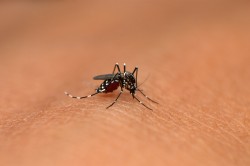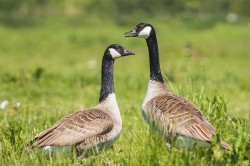Press Release, 26. June 2020
Scientists warn of increasing threats posed by invasive alien species
A contribution to "World scientists’ warning to humanity: a second notice"
In a new study, scientists from around the world warn that the threats posed by invasive alien species are increasing. They say that urgent action is required in order to prevent, detect, and control invaders at both local and global levels.

Photo: ©RealityImages / AdobeStock

Photo: ©Miguel Almeida / AdobeStock

Photo: ©Sander Meertins / AdobeStock
Alien species are plants, animals and microbes that are introduced by people, accidentally or intentionally, into areas where they do not naturally occur. Many of them thrive, spreading widely with harmful effects on the environment, economy, or human health.
The study, published in Biological Reviews, was carried out by an international team of researchers from 13 countries across Africa, Asia, Australasia, Europe, North and South America. It states that the number of invasive alien species is increasing rapidly, with over 18,000 currently listed around the world.
The researchers attribute the escalation in biological invasions to the increase in the number and variety of pathways along which species spread, and to the increasing volume of traffic associated with those pathways. They highlight the role of emerging pathways such as the online trade in unusual pets, and the transport of species across oceans on rafts of plastic.
The study also shows how other drivers of global change, such as climate change, land-use change, alongside international trade are exacerbating the impacts of biological invasions. For example, species transported through shipping can now thrive in new regions, owing to climate warming; and the permanent opening of the Arctic Ocean with global warming is allowing marine species to move between the Atlantic and Pacific Oceans.
The paper is a part of the World scientists’ warning to humanity: a second notice initiative calling for urgent change in our stewardship of the Earth and the life on it. The authors stress that biological invasions can be managed and mitigated. They point to approaches that are working around the world and make specific recommendations for improved management. For example, the introduction of more stringent border controls, including X-ray machines and detector dogs, has led to a progressive decline in the rate of fungal plant pathogens entering New Zealand.
Professor Petr Pyšek of the Czech Academy of Sciences and Charles University in Prague, lead author of the paper, says: "As our knowledge about invasive alien species increases, the problems associated with biological invasions are becoming clearer. The threats posed by invasive alien species to our environment, our economies and our health are very serious, and getting worse. Policy makers and the public need to prioritize actions to stem invasions and their impacts."
Professor Ingolf Kühn, an ecologist at the Centre for Environmental Research (UFZ) says: "We summarised the pertinent knowledge on alien invasive plant and animal species in a brief review. And even if many alien species do yet have impact on the environment, some species are so harmful that immediate action is necessary to conserve our biological diversity".
Publication:
Pyšek P., Hulme P. E., Simberloff D., Bacher S., Blackburn T. M. Carlton J. T., Dawson W., Essl F., Foxcroft L. C., Genovesi P., Jeschke J. M., Kühn I., Liebhold A. M., Mandrak N. E., Meyerson L. A., Pauchard A., Pergl J., Roy H. E., Seebens H., van Kleunen M., Vilà M., Wingfield M. J. & Richardson D. M.: Scientists’ warning on invasive alien species. Biological Reviews https://onlinelibrary.wiley.com/doi/full/10.1111/brv.12627
Further information
Prof. Dr. Ingolf Kühn
UFZ-Department Community Ecology
ingolf.kuehn@ufz.de
UFZ press office
Susanne Hufe
Phone: +49 341 6025-1630
presse@ufz.de
In the Helmholtz Centre for Environmental Research (UFZ), scientists conduct research into the causes and consequences of far-reaching environmental changes. Their areas of study cover water resources, ecosystems of the future, environmental technologies and biotechnologies, the effects of chemicals in the environment, modelling and social-scientific issues. The UFZ employs more than 1,100 staff at its sites in Leipzig, Halle and Magdeburg. It is funded by the Federal Government, Saxony and Saxony-Anhalt.
www.ufz.deThe Helmholtz Association contributes to solving major challenges facing society, science and the economy with top scientific achievements in six research fields: Energy; Earth and Environment; Health; Key Technologies; Matter; and Aeronautics, Space and Transport. With some 39,000 employees in 19 research centres, the Helmholtz Association is Germany’s largest scientific organisation.
www.helmholtz.de